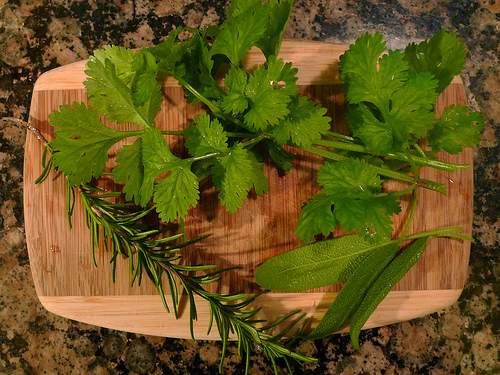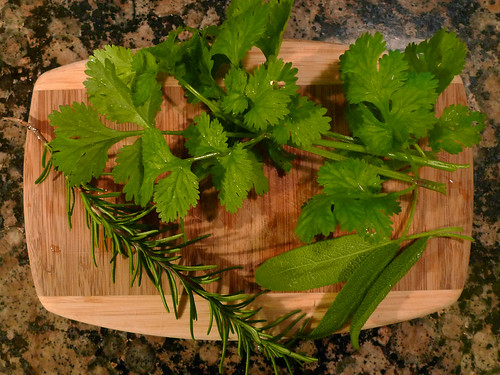Cooking Tip: The Difference Between Fresh and Dried Herbs
Bottled dried parsley, fresh flat-leaf parsley. Tomato, tom-ah-to? Not quite. It can be difficult to determine when to appropriately substitute fresh herbs for dried herbs and vice versa. Here are two important questions to ask yourself before you make that choice: How much of the herb do you need? If you're making a dish that spotlights a particular herb, you'll want to use a fresh one. Take pesto, for instance. You'd never pour 2 cups of dried basil into a food processor and hope for a luscious green pesto sauce -- you'd use fresh basil leaves, no doubt. For something robust and savory like pesto, it's important to use fresh herbs for that earthy bite. But, if you're making chicken ratatouille, a dish that requires several ingredients, it's safe to use dried herbs. After all, you'd only use a few tablespoons of dried marjoram.
How many kinds of ingredients are needed? A good rule of thumb to keep in mind is, the fewer ingredients a recipe calls for, the fresher and finer they should be. When you're whipping up something like frico, a crunchy treat that needs only parmesan cheese, lemon zest and basil, fresh leaves are an absolute must. This way, you taste the sharp saltiness of the cheese, the fragrant lemon and of course, the basil, that initial peppery flavor that ultimately dissolves into minty sweetness.
So now that you've decided on either fresh herbs or dried herbs, how much should you use? It all depends on what you like best, but generally, you should use one-third the amount of a dried herb as you would a fresh one. So instead of 1 cup of fresh parsley, you should use 1/3 cup. Also, it sometimes helps to lightly grind or chop dried herbs to re-release some of the flavors and oils.
One last thing to keep in mind is that sometimes dried herbs have a stronger bite than fresh ones do. However, they tend to go stale quickly. Just be sure you keep your dried herbs in an airtight container in a cool, dry place.


